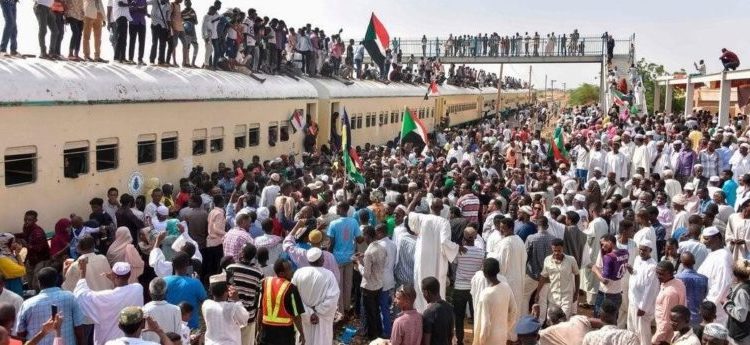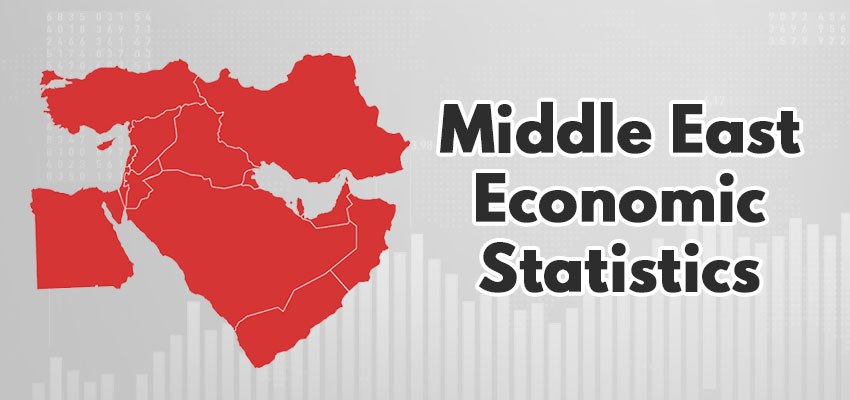
Congratulations! You have found the internet’s most detailed guide to the Middle East’s Economic statistics. This guide gives an overview of the region’s must-know economic statistics, country-by-country, for your ease of understanding. Business in the Middle Eastern is a massive economic opportunity, as together the 29 countries we detail in this article add up to a total population of 631,000,000 and a total GDP of 4,416,531,000,000 or 4.4 trillion USD. Wow. If you are involved in a global business, you definitely don’t want to miss out on the economic benefits of this region.
Many people have a limiting narrative about life in the Middle East, and tend to lump the countries all together: assuming they all speak Arabic, are majority Muslim, have economies based on oil, and have non-Democratic governments. When in reality, this is mostly true, but it is much more nuanced. The 29 countries considered part of the Middle East in this guide have vast differences in culture, lifestyle, natural resources, and politics that have led each of these countries to develop their economies differently. In this guide, we give you a breakdown of the key facts, both the region’s total and then country-by-country. We hope you enjoy this thorough guide where we answer your burning questions about Middle Eastern economic statistics.
Total Middle East Economic Statistics for All Countries Combined
Key Facts
Number of countries: 29
Names of Middle Eastern countries (in alphabetical order): Algeria, Armenia, Azerbaijan, Bahrain, Djibouti, Cyprus, Egypt, Iran, Iraq, Israel, Jordan, Kuwait, Lebanon, Libya, Mauritania, Morocco, Oman, Palestine, Qatar, Saudi Arabia, Somalia, Somaliland, Sudan, Syria, Tunisia, Turkey, United Arab Emirates, Western Sahara, Yemen
The Middle East’s Seven Seas: the Black Sea, the Mediterranean Sea, the Red Sea, the Arabian Sea, the Dead Sea, the Caspian Sea, and the Atlantic Ocean
Region’s
The Middle East’s Three Gulfs: the Gulf of Aden, the Gulf of Oman, and the Persian Gulf
Total population: nearly 631,000,000
Total GDP: 4,416,531,000,000 or 4.4 trillion USD
Main industries: oil and gas, mining, tourism, manufacturing
Countries with the highest GDPs: Saudi Arabia, Turkey, Iran
Countries with the lowest GDPs: Somalia, Yemen, Syria
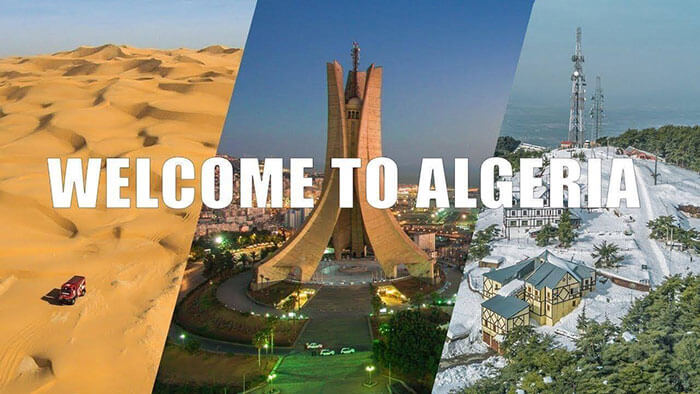
Algeria (People’s Democratic Republic of Algeria)
Algeria is sandwiched between Tunisia and Morocco on the north coast of Africa on the shores of the Mediterranean Sea. Most people don’t know that Algeria is actually the biggest country on the continent, nearly four and a half times larger than France. Despite the mountains and coastal regions in the north, the vast country is more than 80% Saharan Desert. As a result, most people live on arable land close to the sea.
With a mostly state-controlled economy, nearly one-third of the country’s GDP is from the sale of crude oil, natural gas, and coal. Accordingly, Algeria has the world’s 10th largest reserves of natural gas, and the third-largest reserves of shale gas. This lesser-known Middle Eastern country is also the 6th largest gas exporter. With these large economic statistics, Algeria is one of Africa’s largest economies. The government-controlled resources have meant a large investment into social services. Algeria has the highest Human Development Index (HDI) on the African continent, which means it performs exceptionally well in the following categories: life expectancy for health, expected years of schooling, mean of years of schooling for education, and Gross National Income per capita for the standard of living. Though Algeria is rapidly developing and proving itself to be a major economic player in the region, the unfortunate presence of ISIS has put a damper on its international reputation. We remain confident, however, that Algeria will be a major economic player soon.
Key facts
Capital: Algiers
Population: 43,851,044 people
Government: Constitutional presidential republic
Official languages: Modern Standard Arabic and Tamazight (Berber)
Secondary languages: French and Spanish
Borders: northeast by Tunisia; east by Libya; southeast by Niger; southwest by Mali, Mauritania, and Western Sahara; west by Morocco; and north by the Mediterranean Sea
Currency: Algerian dinar (DZD, Arabic is دينار, the sign is DA
Religion: Muslim (official; Sunni) 99%, other (includes Christian and Jewish) <1%
Primary Industries: Hydrocarbons
Agricultural products: wheat, barley, oats, grapes, olives, citrus, fruits; sheep, cattle
Gross domestic product: 173.8 billion USD (2018)
GDP per capita: 4,114.72 USD (2018)
GNI per capita: 14,970 dollars (2017)
Exports:
Export Partners: Italy 17.4%, Spain 13%, France 11.9%, US 9.4%, Brazil 6.2%, Netherlands 5.5%
Gross national income: 619.7 billion PPP dollars (2017)
GDP growth rate: 1.4% annual change (2018)
Major trading partner countries for exports: Italy, France, Spain, the United States, and Brazil
Major trading partner countries for imports: China, France, Italy, Germany, and Spain
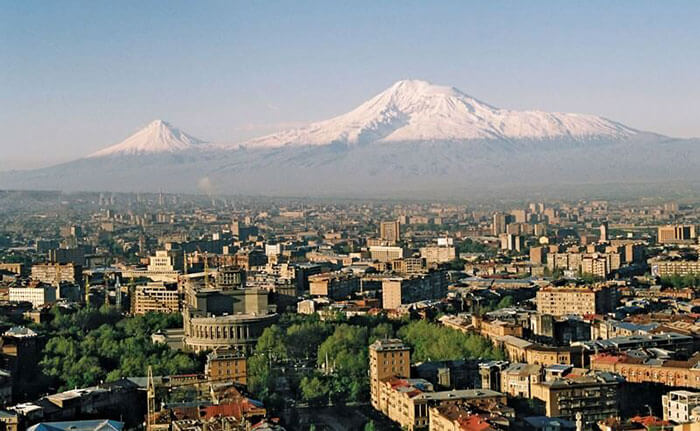
Armenia
Armenia is a small country in the Caucasus Region, to the east of Turkey. The landlocked country is still developing and falls in the median for development statistics. As a founding member of the USSR, a significant amount of early Armenia’s economy was industry and production where they processed and traded food, chemicals, textiles, and machinery within the greater republic. Since gaining independence newly in 1991, the country has done a lot to diversify their industries, and we have seen them rapidly gain traction especially since 2015. One of these sectors has been natural resources, as the mountainous terrain has many deposits of valuable minerals. The country’s rapid growth and change since independence have earned significant international investment, including nearly 1 billion USD from international aid organizations. The government is also attempting to make tourism a top priority, given the massive monasteries, azure lakes, and grand mountains.
Interestingly, a large amount of money is sent annually from diaspora remittances. As ethnic Armenians have found a relatively high amount of success since emigrating, they always make sure to send money to the homeland. The country’s current issue is the border skirmishes in the Nagorno–Karabakh region. Both Azerbaijan and Armenia claim this land.
Key facts
Capital: Yerevan
Population: 3,000,000
Government: Parliamentary representative democracy
Official language: Armenian
Secondary languages: English, Russian, Assyrian, Greek, Kurdish
Borders: North by Georgia, east by Azerbaijan, southeast by Artsakh (disputed territory), the south by Iran, and the west by Turkey
Currency: Armenian dram (AMD) written դրամ in Armenian; the sign is ֏
Religion: Christianity 95%, Yazidism 0.8%, Paganism 0.2%, Other 4%
Primary sectors: Agriculture, mining, hydroelectricity, telecommunications, jewelry, and tourism
Agricultural products: cereal crops (primarily wheat and barley), potatoes, vegetables, and grapes (both eating and for wine)
Gross domestic product (GDP): 12.43 billion USD (2018)
GDP per capita: 4,212.07 USD (2018)
GDP growth rate: 5.2% annual change (2018)
GNI per capita: 10,480 PPP dollars (2018)
Gross national income: 30.93 billion PPP dollars (2018)
Major trading partner countries for exports: Russia ($661 million), Switzerland ($506 million), Bulgaria ($215 million), Germany ($195 million), and Iraq ($151 million)
Major trading partner countries for imports: Russia ($1.2 billion), China ($482 million), Georgia ($267 million), Iran ($253 million), and Germany ($250 million)

Azerbaijan
Similar to Armenia, Azerbaijan is also a Caucus country that gained its independence from the USSR in 1991. The country stumbled into wealth through massive oil deposits and has since managed to significantly develop the rest of the country’s infrastructure. Nothing is more evident of this than the lavish city of Baku and the ritzy buildings that make up the downtown and the seafront promenade. In 2016, the president declared his intention to move the country away from oil and gas production to other sectors of the economy especially through agriculture, logistics, IT, and tourism. Azerbaijan’s closest ally is Turkey and that is reflected in the similarity of language, religion, and culture. They are often called “one nation with two states” and that is reflected strongly in economic patterns and trade habits.
Key facts
Capital: Baku
Population: 10,139,177
Government: Unitary semi-presidential republic
Official languages: Azerbaijani (Similar to Turkish)
Secondary languages: Russian, English, and several endangered languages spoken by less than 10,000 people
Borders: the Caspian Sea to the east, Georgia and Russia to the north, Iran to the south, and Armenia to the south-west and west
Currency: Azerbaijani manat, the symbol is ₼, the currency code is AZN
Religion: Islam 96.9% (predominantly Shia), Christian 3%, Other <0.1. However, Azerbaijan is the most secular government in the Muslim world so the number of practicing Muslims is much lower
Primary sectors: oil and gas
Agricultural exports: grains (barley), maize, wine grapes, potatoes, cotton, tea, silk, and tobacco. This sector employs more than a third of the population though it only equals 5% of the total GDP
Gross Domestic Product (GDP): 46.94 billion USD
GDP per capita: 4,721.18 USD (2018)
GNI per capita: 17,100 PPP dollars (2018)
GDP growth rate: 1.4% annual change (2018)
Gross national income: 170 billion PPP dollars (2018)
Major trading partner countries for exports: Italy ($5.99 billion), Turkey ($1.85 billion), Israel ($1.31 billion), the Czech Republic ($954 million), and Germany ($820 million)
Major trading partner countries for imports: Russia ($1.88 billion), Turkey ($1.55 billion), United Kingdom ($1.3 billion), China ($674 million), and Germany ($603 million)
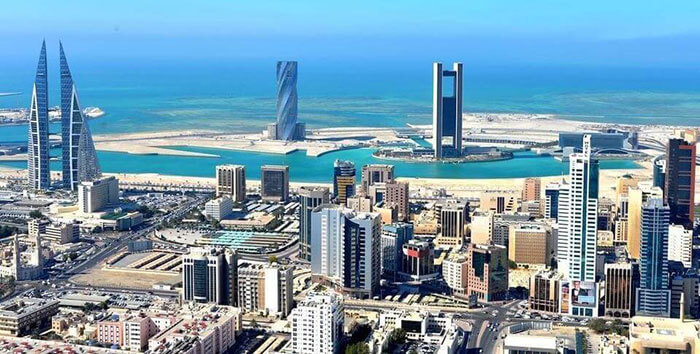
Bahrain
Considered the most international business-friendly country in the region, this smallest Middle Eastern island nation has emerged as an economic player, packing a massive punch despite its small size. Similar to many neighboring countries, the country primarily relies on oil and gas for its economy. However lacking many deposits, they mostly process crude oil imported from other countries. Notably, the government decided early on to invest heavily in other sectors especially tourism, financial institutions, and communications networks which has earned the country status as the Gulf’s first post-oil economy. It is a fascinating case study, because with such little amount of land, they have had to turn most of it into urban areas. It thus has a very low amount of agriculture compared to most other countries in the region.
The tourism industry has gained a lot of traction due to the country’s positioning as one of the most liberal in the region. Due to its strategic geographic location, weekends in Bahrain are filled with an influx of Kuwaitis, Saudi Arabians, and Qataris (more conservative countries) to relax here. The other note with its strategic location has been the use of ports. As an island, Bahrain has several high-capacity ports along its shores which usher in significant foreign investment, including the establishment of military bases. Even the United States has a base in Bahrain. In the next decade, as countries move towards more renewable energy sources, Bahrain’s economy will emerge as a clear standout.
Key Facts
Capital: Manama
Population: 1,723,734 people
Government: Constitutional monarchy
Official languages: Arabic
Secondary languages: English, Farsi, Urdu
Borders: an island that shares maritime borders with Iran, Qatar, and Saudi Arabia
Currency: Bahraini Dinar; the English symbol for the Dinar is BD; the Arabic symbol is . د. ; the currency code is BHD
Religion: 70.2% Muslim, 29.8% other
Primary Sectors: oil, gas, banking, insurance, tourism, aluminum, and plastics
Agricultural products: alfalfa, dates, figs, and pomegranates. Only an estimated 3000 work in agriculture.
Gross domestic product: 37.75 billion USD (2018)
GDP per capita: 24,050.76 USD (2018)
GNI per capita: 22,110 USD (2018)
GDP growth rate: 1.8% annual change (2018)
Gross national income: 70.16 billion PPP dollars (2018)
Major trading partner countries for exports: Saudi Arabia, United Arab Emirates, United States, and Oman
Major trading partner countries for imports: Saudi Arabia, China, United Arab Emirates, United States, and Australia.

Djibouti
This Horn of Africa country sits less than 500 miles away from Yemen across the Red Sea. As the country is predominantly desert with a brutal climate, they are unable to live in a majority of their country or grow crops through much of the land. Luckily, the one natural resource they do have is the water and coastline, and this little known country has reaped tremendous benefits from its strategic positioning on the shores of the Red Sea. All four of the main industries connect directly with the existence of the sea: fishing, port services, salt, and tourism. Fishing is done mostly on a small scale, which allows the industry a high number of fishermen to participate in it. Similarly, with so much coastline, Djibouti is home to more than 6 million tons of salt. This “white gold” is caravaned via camel to Ethiopia. Next, Port services are especially lucrative considering the proximity of many landlocked countries, such as Ethiopia. Though Ethiopia shares borders with other countries with a Red Sea coast (Eritrea and Somalia) Djibouti is by far the closest and the most stable. Djibouti is also home to many fascinating tourist attractions that are starting to pique the interest of the international tourism industry. With fantastic diving, other-worldly geologic formations, and white sand beaches, we can certainly see why.
Key facts
Capital: Djibouti City
Population: 988,000
Government: semi-presidential republic
Official languages: Arabic and French
Indigenous languages: Afar and Somali
Secondary languages: English, Italian, Mandarin
Borders: Eritrea in the north, Ethiopia in the west and south, and Somaliland in the southeast
Currency: Djiboutian franc; the symbol is Fdj; the currency code is DJF
Religion: Muslim 94%, Christian 6%
Primary sectors: fishing, port services, salt, tourism
Agricultural products: Due to the rough terrain and climate, agriculture only makes up 3% of the country’s GDP. Even then, most of the profits are from animal products instead of things that are grown. Djibouti’s main agricultural products are goats, animal hides, camels, and sheep
Gross domestic product: 2.956 billion USD (2018)
GDP per capita: 3,082.54 USD (2018)
GDP growth rate: 5.5% annual change (2018)
Gross national income per capita: 3,540 USD (2019)
Major trading partner countries for exports: Saudi Arabia ($48.3 million), India ($11.1 million), Nigeria ($6.45 million), United Kingdom ($6.13 million), and Netherlands ($3.05 million)
Major trading partner countries for imports: China ($1.87 billion), United Arab Emirates ($1.07 billion), India ($859 million), Indonesia ($212 million), and Malaysia ($205 million)

Cyprus
The sunny island nation of Cyprus lies within the Eastern Mediterranean, close to the shores of the continental Middle East. Its geopolitical classifications are a bit of a conundrum, as the Northern part of the country is claimed by Turkey, the Southern part belonging to the EU, and it being equidistantly to the shores of Northern Africa, the Levant, and Turkey. Based on geography alone, it certainly belongs in the Middle East, though its culture and religion align more with Greece and Europe. We have decided to include it on this list.
Cyprus is considered a “high-income country” by the World Bank and consistently ranks highly for economic freedoms. Besides Israel, it is the most wealthy of its neighbors. Its status as a prosperous country has roots in ancient times for its rich mineral deposits, prolific agriculture, and excellent human capital. More than solely economic, Cypriots live a good life. The country has been ranked 23rd globally for quality of life. Drawing upon this success, in the last few decades Cyprus has seen tremendous growth as a desirable tourism destination, given its immense natural beauty with pristine beaches, forests, and mountains. Millions of tourists, especially from Europe, arrive annually to enjoy the sun and breathtaking sites. Additional factors that have boosted its tourism success include its positioning between East and West, affordable prices, and a well-educated English speaking population. Accordingly, the service-based sector consists of nearly 80% of the country’s GDP while employing upwards of 70% of total citizens. As such, they rely heavily on trade for many resources. Its unique geography encourages trade from both Europe and the Middle East, and many foreign investors use it as their gateway into both the regions due to low barriers to entry.
Key facts
Capital: Nicosia/ Lefkosa
Population: 1,210,756
Government: a republic with a presidential system
Official languages: Greek and Turkish
Secondary languages: English
Minority languages: Armenian and Cypriot Arabic
Borders: Cyprus is an island, so has no land borders but has a United Nations Buffer Zone across the middle of the country that separates Northern Cyprus (claimed by Turkey) from Cyprus, an independently recognized country. This 134 square mile wall that goes directly through the capital makes Nicosia/ Lefkosa the planet’s only divided capital.
Currency: in Cyprus, they use the Euro (EUR) with the symbol € as the country is a member of the European Union; in Northern Cyprus, they use the Turkish Lira
Religion: Cyprus is 98.2% Christian, 0.6% Muslim, 1.3% other; Northern Cyprus is 99% Sunni Muslim (99%) are Sunni Muslims
Primary Sectors: Tourism, real estate, banking, manufacturing, shipping, food processing
Agricultural products: Despite the arable land, only 3% of the economy is from agriculture. The main agricultural products are citrus fruits, potatoes, and beverages.
Gross domestic product (GDP): 24.96 billion USD (2018)
GDP per capita: 28,159.30 USD (2018)
GDP growth rate: 4.1% annual change (2018)
GNI per capita: 35,170 PPP dollars (2017)
Major trading countries for exports: Cayman Islands ($753 million), Greece ($461 million), Libya ($457 million), Norway ($288 million), and United Kingdom ($230 million)
Major trading countries for imports: Greece ($2.01 billion), South Korea ($1.25 billion), Italy ($1.05 billion), Turkey ($989 million), and Russia ($760 million)

Egypt
With nearly 100 million people, Egypt is the most populous country in the Middle East. Its capital, Cairo, has been a city of commerce for centuries with traders coming from all around Africa to the mouth of the Nile. Cairo is a megacity and its metro population consists of more than 20 million, the largest city in both Africa and the Middle East. The country’s strong propensity toward commerce and trade has continued until today where it stands it remains one of both Africa and the Middle East’s biggest economies.
Its main sector is energy and has developed significant infrastructure in oil, natural gas, hydropower, and solar, and wind power. Until now, oil has been the leader by far in this sector due to massive oil fields, but Egypt has been learning how to optimize its other natural resources for maximum energy output. This has included solar panels in the wide expanse of desert, dams on the Nile River, and coastal wind farms. Cairo’s economy also receives a significant boost from tourists who want to see the Pyramids of Giza, the only ancient World Wonder still standing, with their own eyes. The stunning pyramids are directly in the capital city and tourist infrastructure has been well developed to meet the needs of 9 million tourists who come annually.
Key facts
Capital: Cairo
Population: 102,334,404
Government: Semi-presidential
Main language: Literary Arabic, Egyptian Arabic
Foreign Languages: English, French, Italian
Minority languages: Sa’idi Arabic, Bedouin Arabic, Sudanese Arabic, Domari, Nobiin
Borders: Libya to the west, Gaza Strip to the northeast, Israel to the east, and Sudan to the south; water borders with Mediterranean Sea, Nile River, and the Red Sea
Currency: the Egyptian Pound (EGP), the symbol is E£ or ج. م in Arabic
Religion: Muslim 90%, Christianity 10%, Baháʼí: (< 0.003%)
Primary Industries: energy, tourism, clothing and textiles, media, and agriculture
Agricultural products: citrus fruits, onions, grapes, pomegranates, garlic, mango, and strawberries
Gross domestic product: 290.9 billion USD (2018)
GDP per capita: 2,549.13 USD (2018)
GNI per capita: 12,100 PPP dollars (2018)
GDP growth rate: 5.3% annual change (2018)
Gross national income: 1.191 trillion PPP dollars (2018)
Major trading countries for exports: Italy ($2.67 billion), United States ($2.48 billion), Turkey ($2.41 billion), United Arab Emirates ($2 billion), and Saudi Arabia ($1.6 billion)
Major trading countries for imports: China ($12.3 billion), Russia ($7.75 billion), United States ($4.93 billion), Germany ($3.83 billion), and Saudi Arabia ($3.53 billion)

Islamic Republic of Iran (Iran)
Before the 1979 revolution, Iran had one of the world’s fastest-growing economies with vast oil, gas, and shift towards industrial activities. With the sharp change in government and legislature, the country moved towards nationalizing all industries and sectors, the most profitable of which was oil and gas due to massive deposits. In the last several years, Iran’s economy has been negatively impacted by the United States’ sanctions in a spat over nuclear disarmament. In late 2020, further hydrocarbon sanctions were enacted, causing the country’s heavily oil-based economy to falter even further. Iran’s future economic prosperity in this country is tied to these nuclear deals.
Key facts
Capital: Tehran
Population: 84 million
Government: Islamic theocracy republic
Main languages: Persian and Azeri
Secondary languages: Kurdish, Gilaki, Mazandarani, Luri, Arabic, Balochi, and Turkmen
Minority languages: Qashqai, Taleshi, Tati, Baadi
Borders: north by Azerbaijan, Armenia, Turkmenistan, and the Caspian Sea; east by Pakistan and Afghanistan; south by the Persian Gulf and the Gulf of Oman; west by Turkey and Iraq
Currency: the Iranian rial (IRR) or ریال ایران in Persian; sign is: ﷼
Religion: Approximately 99% Muslim (90% Shi’a branch and 9% Sunni branch), <1% Christian, Zoroastrian, Jewish, Baháʼí, Mandeans, and Yarsan
Primary Industries: oil and gas, textiles, food processing, and agriculture
Agricultural products: pistachios (world’s largest producer), cotton, tea, and citrus
Gross domestic product: 454 billion USD (2017)
GDP per capita: 5,627.75 USD (2017)
GDP growth rate: 3.8% annual change (2017)
GNI per capita: 21,050 PPP dollars (2017)
Gross national income: 1.698 trillion PPP dollars (2017)
Major trading partner countries for exports: China ($18.9 billion), India ($13.4), United Arab Emirates ($4.73 billion), South Korea ($3.64 billion), and Italy ($3.14 billion)
Major trading partner countries for imports: China ($14 billion), United Arab Emirates ($9.11 billion), Germany ($3 billion), India ($2.84 billion), and South Korea ($2.29 billion)

Iraq
Similar to other countries, oil is king in Iraq. More than 98% of foreign earnings come from oil and gas and the government heavily benefits from the sector. Though agriculture is a small part of the total GDP (2%), it plays a large role in Iraqi’s lives as approximately 20% of the total jobs are in this sector. Unfortunately, the 2003-2011 war and the ensuing conflicts with ISIS have destroyed a lot of the arable land and created other problems such as corruption. The future of the country is on shaky ground with instability in the government, poor health care, and the continued presence of the Islamic State.
Key facts
Capital: Baghdad
Population: 40 million
Government: the 2005 constitution classified it as an Islamic, democratic, federal parliamentary republic
Official languages: Arabic, Kurdish
Secondary languages: the Iraqi dialect of Turkish, Chaldean, Assyrian
Borders: Turkey to the north, Iran to the east, Kuwait to the southeast, Saudi Arabia to the south, Jordan to the southwest, and Syria to the west.
Currency: Iraqi dinar (IQD), the symbol is ع.د
Religion: 98% Muslim (58% Shia, 37% Sunni, and 5% other), 1.5% Christian, <.05% Yazidism, Mandaeism, and other
Primary Industries: oil and gas, gold, financial institutions, telecommunications
Agricultural products: grain (wheat and barley), citrus fruits, tobacco, melons, grapes, rice, cotton, sugarcane
Gross domestic product: 224.2 billion USD (2018)
GDP per capita: 5,834.17 USD (2018)
GDP growth rate: -0.6% annual change (2018)
GNI per capita: 17,210 PPP dollars (2018)
Internet users: 49.4% of the population (2017)
Gross national income: 661.5 billion PPP dollars (2018)
Major trading partner countries for exports: India ($20.8 billion), China ($20 billion), United States ($10.6 billion), South Korea ($8.47 billion), and Greece ($4.92 billion)
Major trading partner countries for imports: United Arab Emirates ($11.3 billion), Turkey ($8.3 billion), China ($7.92 billion), South Korea ($1.91 billion), and India ($1.85 billion).

Israel
Israel is known for being an outlier in the region, a Jewish state amidst Muslim countries. Its economic patterns also differ heavily from surrounding states. Israel has the highest HDI in the region and is even ranked higher than South Korea, Slovenia, Spain, and France. There have been a couple of reasons for this success, but one of them is the technological sector. Israel has been at the forefront of innovative science and technology that has attracted significant foreign investment and positioned the country for success. It is one of the country’s top startup hotspots, with citizens thinking about ways to improve the quality of life for the rest of the world. Besides tech, they are known for their cut diamonds and consist of nearly 15% of the world’s production. Finally, tourism has attracted significant earnings, facilitated by the quality transportation infrastructure that accommodates visitors by land, sea, and road. Israel has significant cultural and religious sites, beaches, and mountains that attract millions annually.
Key facts
Capital: Tel Aviv
Population: 8.5 million people
Government: parliamentary democracy
Official languages: Hebrew and Arabic
Secondary languages: Russian, English, Yiddish
Borders: Lebanon to the north, the Golan Heights and Syria to the northeast, the West Bank and Jordan to the east, the Gaza Strip and Egypt to the southwest
Currency: New Israel Shekel (NIS) colloquially Shekel, symbol ₪
Religion: 74.2% Jewish, 17.8% Muslim, 2.0% Christian, 1.6% Druze, 4.4% other including Samaritanism and Baháʼí
Primary Industries: technology, diamonds, industrial manufacturing, tourism, agriculture
Agricultural products: potato, carrots, bell pepper, dates, avocados, and mangos
Gross domestic product: 370.6 billion USD (2018)
GDP per capita: 41,715.03 USD (2018)
GDP growth rate: 3.5% annual change (2018)
GNI per capita: 39,940 PPP dollars (2018)
Gross national income: 354.8 billion PPP dollars (2018)
Major trading partner countries for exports: United States ($19B), China ($5.15B), Palestine ($3.03B), United Kingdom ($2.19B), and Germany ($2.17B)
Major trading partner countries for imports: United States ($10.3B), China ($9.92B), Turkey ($6.35B), Germany ($5.35B), and Russia ($4.21B).

Jordan
Unlike many of its neighbors, Jordan does not have any oil and gas resources in the country. As a result, the government and royals have had to be very strategic to build up other industries. They have been very successful as the quality of life in Jordan ranks among the highest in the region and the greater world. Early on in statehood, the government decided to encourage private enterprise instead of public, given the lack of natural resources. As a result, Jordanian companies have built up financial, communication, manufacturing, and tourism sectors that have brought prosperity to the nation. Tourism remains a key factor as Jordan is home to one of the wonders of the world, the ancient city of Petra. It is also home to the Dead Sea, the lowest point on earth, and a bucket list destination.
Key facts
Capital: Amman
Population: 10.2 million
Government: a parliamentary monarchy
Official languages: Arabic
Secondary languages: English, French
Minority languages: Armenian, Chechen, and Circassian
Borders: North is Syria, East is Iraq, southeast is Saudi Arabia, and west is Israel and the West Bank
Currency: Jordanian dinar (JOD), the symbol is د.ا
Religion: 95% Muslim, 4% Christian, .4% Buddhist, .1% Hindu, .5% other
Primary Sectors: tourism, communication, manufacturing, phosphates, textiles, mining, finance
Agricultural products: citrus fruits, cereals, tomatoes, cucumbers, chickpeas, and olives
Gross domestic product: 42.23 billion USD (2018)
GDP per capita: 4,241.79 USD (2018)
GNI per capita: 9,430 PPP dollars (2018)
GDP growth rate: 1.9% annual change (2018)
Gross national income: 93.93 billion PPP dollars (2018)
Major trading partner countries for exports: United States ($1.6B), Saudi Arabia ($999M), India ($813M), Iraq ($706M), and United Arab Emirates ($416M)
Major trading partner countries for imports: Saudi Arabia ($3.73B), China ($3B), United Arab Emirates ($1.54B), United States ($1.46B), and Germany ($994M).

Kuwait
Kuwait owes where they are today to oil. As most of the country is desert, there is no drinking water, scorching heat, and dry land, where the people were unable to grow agriculture much less survive without drinking water. However, oil changed the country’s luck and enabled it to develop quality infrastructure rapidly. A little known fact is that the Kuwaiti Dinar is the strongest currency in the world, where one Dinar is worth more than 3 USD. This is due to the generally high stability of global oil prices. According to the World Bank, Kuwait is the fourth richest country in the world per capita. Despite their extreme wealth, they cannot change the reality of agriculture. Today only .3% of the land in Kuwait is used for agriculture meaning Kuwait must source more than 95% of its food from other countries. They must also import or desalinate upwards of 75% of drinkable water. They hope to attract more international investment away from solely hydrocarbons.
Key facts
Capital: Kuwait City
Population: 4.2 million
Government: constitutional monarchy (emirate) with a semi-democratic framework
Official language: Arabic
Secondary languages: English, Farsi, Urdu
Borders: the Persian Gulf to the east, Iraq to the west and north, and Saudi Arabia to the south
Currency: Kuwaiti Dinar (KD), the symbol is د.ك
Religion: 99% Muslim, 1% Christian
Primary Industries: oil and gas, other hydrocarbons, finance, real estate, and business services. desalination, food processing, construction
Agricultural products: tomatoes, onions, melons, and cucumbers
Gross domestic product: 140.6 billion USD (2018)
GDP per capita: 33,994.41 USD (2018)
GNI per capita: 84,250 PPP dollars (2018)
GDP growth rate: 1.2% annual change (2018)
Major trading partner countries for exports: China ($13.6B), South Korea ($11.4B), India ($7.44B), Japan ($6.11B), and Chinese Taipei ($4.6B)
Major trading partner countries for imports: China ($4.36B), United Arab Emirates ($4.07B), United States ($3.09B), Saudi Arabia ($2.21B), and Japan ($1.88B)

Lebanon
Lebanon is the most religiously diverse country in the region with high populations of both Christians and Druze. Despite many positive stories of triumph, the country is best known for its 15-year civil war that decimated the economy and the value of the Lebanese pound. In the wake of the war, the government aimed to make the country once again a regional powerhouse of economic and social stability making radically different policies. While some surrounding countries have their economies and industries entirely managed by the state, Lebanon’s private sector has no interference from the government. It also is income tax-free, a huge incentive, especially for foreigners who must pay high taxes in their own countries. Though positive in theory, these policies created a large wealth divide with almost no social services available to people in need. This has created significant civil unrest worsened by the 2020 explosion in a main industrial area, killing 204, leaving 300,000 homeless, and doing upwards of 15 billion USD in damages
Key facts
Capital: Beirut
Population: 6.8 million
Government: Parliamentary democratic republic
Official language: Arabic
Secondary languages: French and English (both commonly spoken)
Borders: the Mediterranean Sea to the west, Israel to the south, and Syria to the east and north
Currency: Lebanese pound (LBP), symbol ل. ل.
Religion: 67.4% Muslim, 30.1% Christian, 5.2% Druze
Primary Industries: Mining (gold, iron, copper, diamonds), banking, tourism, jewelry
Agricultural products: olives, citrus fruits, and cereals
Gross domestic product: 56.64 billion USD (2018)
GDP per capita: 8,269.79 USD (2018)
GNI per capita: 13,010 PPP dollars (2018)
GDP growth rate: 0.2% annual change (2018)
Gross national income: 89.09 billion PPP dollars (2018)
Major trading partner countries for exports: United Arab Emirates ($486M), Saudi Arabia ($240M), Syria ($205M), South Africa ($175M), and Switzerland ($172M)
Major trading partner countries for imports: China ($2.05B), Greece ($1.73B), Italy ($1.63B), United States ($1.41B), and United Arab Emirates ($1.17B).

Libya
Although Libya has significant potential, its growth has been stunted due to political instability and terrorism. More than half, and 85% of export income, is through oil and gas. This hydrocarbon-rich economy has translated into one of the highest GDPs per capita in Africa. However, this wealth in reality has not seen its way to all the Libyan people, meaning many still live in poverty. For example, though agriculture is the second-largest sector, approximately 80% of all food is still imported meaning goods can be expensive and hard to come by. Hopefully its tourism potential can be realized soon. Libya is gorgeous with its translucent water beaches, 13 major archaeological sites, and vast sand dunes.
Key facts
Capital: Tripoli
Population: 6.8 million
Government: interim government in 2020
Official languages: Modern Standard Arabic
Secondary languages: Italian, English, Egyptian Arabic, and Tunisian Arabic
Borders: the Mediterranean Sea to the north, Egypt to the east, Sudan to the southeast, Niger and Chad to the south, and Tunisia and Algeria to the west. There are also maritime borders with Greece, Italy, and Malta.
Currency: Libyan dinar (LYD), the symbols are L and ل.د
Religion: 96.6% Muslim, 3% Christian, .4% other
Primary Industries: oil and gas, agriculture, mining (especially iron and steel), construction
Agricultural products: tobacco, olives, grains, dates, and almonds
Gross domestic product: 48.36 billion USD (2018)
GDP per capita: 7,241.70 USD (2018)
GDP growth rate: 7.9% annual change (2018)
GNI per capita: 21,340 PPP dollars (2018)
Gross national income: 142.5 billion PPP dollars
Major trading partner countries for exports: Italy ($4.57B), China ($4.17B), Germany ($3.71B), Spain ($3.65B), and France ($2.48B)
Major trading partner countries for imports: Turkey ($1.5B), United Arab Emirates ($1.44B), China ($1.43B), Italy ($1.42B), and Spain ($712M)
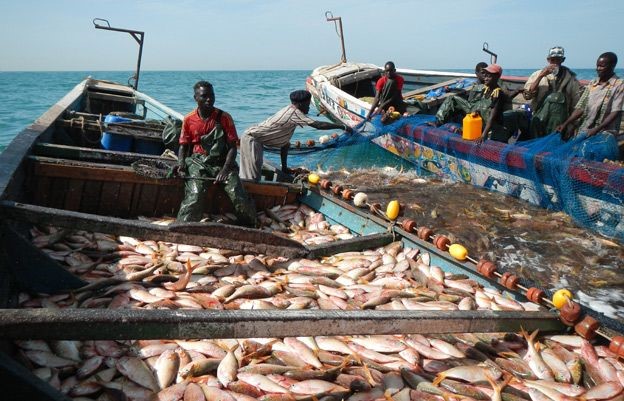
Mauritania
Lesser-known Mauritania has mostly a subsistence-based economy rooted in livestock, farming, and fishing. A country of contrasts, Mauritania is learning to best utilize the two natural resources it has in abundance, water, and sand. From the predominantly untouched water, industrial fishing has yielded the country’s most profitable products. In 2019, non-fillet frozen fish earned 450 million USD and processed crustaceans 443 million. From sand deposits, they have been able to mine. Up to 75% of the population still practices traditional economic activity related to herding goats, camels, cattle, and sheep. Though it is starting to wean itself, international aid and investment are still crucial to Mauritania, meaning that it is easily impacted by the trends of the global market.
Key facts
Capital: Nouakchott
Population: 4.6 million
Government: unitary, semi-presidential republic and an Islamic republic
Official language: Modern Standard Arabic
Secondary languages: French, Wolof, Tamasheq, Zenaga
Borders: Algeria to the north, Mali to the East, Senegal to the South, Western Sahara to the North West
Currency: Mauritanian ouguiy (MRU)
Religion: 100% Muslim
Primary Industries: mining (iron ore, gold, copper, gypsum), industrial fishing, pastoralism
Agricultural products: tea, millet, sorghum, rice, and corn
Gross domestic product: 5.235 billion USD (2018)
GDP per capita: 1,188.83 USD (2018)
GNI per capita: 4,120 PPP dollars (2018)
GDP growth rate: 3.6% annual change (2018)
Gross national income: 18.14 billion PPP dollars (2018)
Major trading partner countries for exports: China ($735M), Spain ($370M), Switzerland ($319M), Côte d’Ivoire ($159M), and Japan ($139M)
Major trading partner countries for imports: China ($1.04B), France ($200M), Morocco ($188M), Spain ($175M), and Belgium-Luxembourg ($133M).
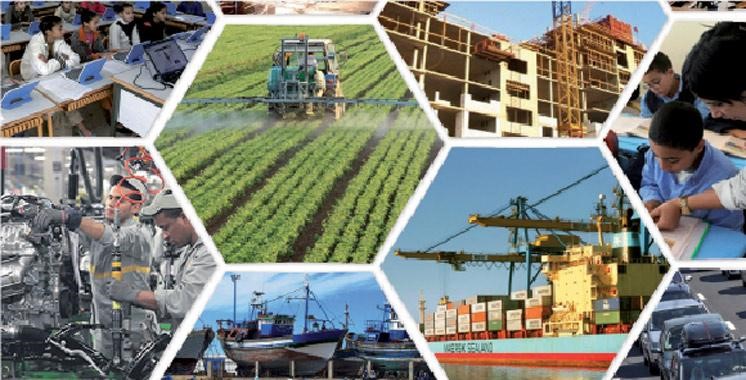
Morocco (the Kingdom of Morocco)
Morocco is known as one of the most stable countries in the region, and one of the world’s most desirable places to travel. To get it to where it is today, the government in the ‘80s decided to enact massive policies to transfer sectors from the government to the hands of private people and businesses. Agriculture was significantly developed, considerable considering it has some of the most farmable land in the region. It is one of the only countries in the region that is self-sufficient in growing food for its population (minus grains, sugar, coffee, and tea). More than 40% of its citizens work in this sector. Additionally, tourism is strong as Morocco has excellent physical and cultural resources: sand dunes, snowy mountains, beautiful old medinas, historic mosques, and even surfing! The coronavirus pandemic has created a lag in the national economy for the first time since 1995.
Key facts
Capital: Rabat
Population: 36.9 million
Government: Parliamentary constitutional monarchy
Official languages: Arabic and Tamazight
Secondary languages: French, Spanish, English
Borders: Algeria to the east and southeast, Western Sahara to the south, the Atlantic Ocean to the west, and the Mediterranean Sea to the north.
Currency: Moroccan dirham (MAD)
Religion: 99% Muslim, 1% other
Primary Industries: agriculture, tourism, mining, textiles, and construction
Agricultural products: fish, grains, oranges, tomatoes, spices
Gross domestic product: 117.9 billion USD (2018)
GDP per capita: 3,237.88 USD (2018)
GNI per capita: 8,410 PPP dollars (2018)
GDP growth rate: 3.0% annual change (2018)
Gross national income: 308.5 billion PPP dollars (2018)
Major trading partner countries for exports: Spain ($7.45B), France ($6.94B), United States ($1.47B), Italy ($1.39B), and India ($1.3B)
Major trading partner countries for imports: Spain ($9.45B), France ($5.05B), China ($4.13B), United States ($3.62B), and Italy ($2.52B)
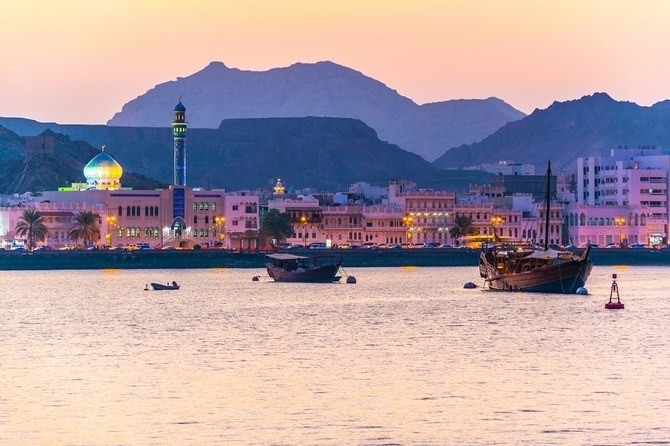
Oman (the Sultanate of Oman)
Ranked the world’s safest place for expatriates, Oman has a lot to offer. Like most of the Arabian Peninsula, Oman got a massive economic boost through oil and gas in the region. Although enjoying considerable success, the government knew eventually this oil would run out so they started developing a plan for a post-oil economy in 1996. In just four years, the country was seeing more investment and stabilized plans than any other Gulf country. Nearly half the country’s GDP is service-based. Notably, Oman only experienced minor protests during the 2011 Arab Spring, suggesting that most people were relatively happy with the quality of life. In response to the protests, the government has invested greatly in social welfare programs and services that have provided more economic opportunities and freedom to the bottom half of Omanis.
Key facts
Capital: Muscat
Population: 5.1 million
Government: absolute monarchy (sultanate)
Official languages: Arabic
Secondary languages: Baluchi, English, Urdu
Other prominent languages: Somali, Gujarati, Sindhi, and Portuguese
Borders: Oman borders Saudi Arabia, United Arab Emirates, and Yemen to the east and shares maritime borders with Iran and Pakistan with the Strait of Hormuz and the Persian Gulf
Currency: Omani Rial (OMR), the symbol is ر.ع.
Religion: 85.9% Muslims (majority Ibadhi), 6.5% Christian, 5.5% Hindu, 0.8% Buddhist, 0.2% other
Primary Industries: oil and gas, trading, construction, tourism, agriculture
Agricultural products: date palms, limes, wheat, barley, and chickpeas
Gross domestic product: 79.28 billion USD (2018)
GDP per capita: 16,415.16 USD (2018)
GNI per capita: 41,680 PPP dollars (2018)
GDP growth rate: 1.8% annual change (2018)
Gross national income: 201.3 billion PPP dollars (2018)
Major trading partner countries for exports: China ($16.7B), India ($3.31B), United Arab Emirates ($2.84B), South Korea ($2.49B), and Saudi Arabia ($2.14B)
Major trading partner countries for imports: United Arab Emirates ($11.7B), China ($2.42B), India ($1.88B), Japan ($1.54B), and the United States ($1.38B).

Palestine
Palestine, the land consisting of the West Bank and the Gaza Strip, is only recognized by 138 of 193 United Nations members. As a result, they have had some difficulty establishing a strong economic presence as many things need to go through Israel first. This has led to restrictions on trade and movement of people. Agriculture is the largest sector of the economy where it has roots in the cultural and social fabric of the country, written into cultural songs, poems, and literature. The sector makes up nearly one-fourth of the country’s GDP. However, generally, unemployment rates soar, and development levels are low beyond the rates of their neighboring countries. One of the main sources of the country’s income is foreign donors and remittances.
Key facts
Capital: Ramallah
Population: 5.1 million
Government: semi-presidential republic
Official languages: Arabic
Secondary languages: English, French, Hebrew
Currency: no official currency, use Israeli new shekel and Jordanian dinar
Religion: 80–85% Muslim, 12–14% Jewish, 1.0–2.5% Christian
Primary Industries: agriculture, stone/ marble, food processing, handicrafts, leather, pharmaceuticals, tourism
Agricultural products: citrus fruits, olives, almonds, grains
Gross domestic product: 14.62 billion USD (2018)
GDP per capita: 3,198.87 USD (2018)
GNI per capita: 6,000 PPP dollars (2018)
GDP growth rate: 0.9% annual change (2018)
Gross national income: 27.43 billion PPP dollars (2018
Major trading partner countries for exports: Israel ($958M), Jordan ($106M), United Arab Emirates ($26.6M), Saudi Arabia ($22.6M), and United States ($14.1M),
Major trading partner countries for imports: Israel ($3.03B), Turkey ($381M), Jordan ($213M), China ($179M), and Egypt ($139M)

Qatar
This small Gulf country holds a remarkable title! It is the country with the largest GDP per capita in the whole world. That’s right, not a Scandinavian country or the United States, but Qatar. This is due in large part to the large oil reserves on land and offshore. In fact, despite consisting of a small area, Qatar is home to the 3rd biggest oil reserves. Look no further than the modern skyscrapers that grace downtown Doha to understand the impact that oil has had on developing the country. Interestingly, before the discovery of oil, Qatar was an impoverished economy based on pearl diving.
Qatar has been in the news the last few years as it will be the first Middle Eastern or Muslim majority country to ever host a major international sporting event. In 2022, Doha is slated to host the World Cup and the preparation for this massive occurrence has seen more than 500 million USD in investments to build/ improve hotels, stadiums, sewer lines, and transportation.
Key facts
Capital: Doha
Population: 2.9 million
Government: absolute monarchy
Official languages: Arabic
Secondary languages: English
Borders: Saudi Arabia to the South
Currency: Qatari riyal, the symbol is either QR or ر.ق
Religion: 67.7% Muslim, 13.8% Hindu, 13.8% Christian, 3.1% Buddhist
Primary Industries: oil, gas, manufacturing, finance, real estate, and hospitality
Agricultural products: cereals, dates, poultry, dairy
Gross domestic product: 191.4 billion USD (2018)
GDP per capita: 68,793.78 USD (2018)
GNI per capita: 124,410 PPP dollars (2018)
Gross national income: 346.1 billion PPP dollars (2018)
GDP growth rate: 1.5% annual change (2018)
Major trading partner countries for exports: South Korea ($12.5B), India ($9.65B), Japan ($8.68B), China ($8.65B), and Singapore ($5.84B)
Major trading partner countries for imports: United States ($5.09B), France ($3.61B), United Kingdom ($3.06B), China ($2.98B), and India ($1.83B)

Saudi Arabia (the Kingdom of Saudi Arabia)
The birthplace of Islam is one of the two Middle Eastern countries to rank in the top 20 for the world’s largest GDPs. Saudi Arabia has the second-largest oil reserves and is the second-largest producer. The Kingdom is estimated to have about 25% of the planet’s total reserves. In addition to these hydrocarbon resources, Saudi Arabia also has the second most valuable natural resources, most of which are mined and exported. These industries are majority state-owned, which has enabled them to provide quality services for their inhabitants making it a tax haven and a very economically attractive place to live. As a result, nearly 6.5 million foreigners live and work in the Kingdom, mostly in the private sector, directly contributing to the GDP. Additionally, Saudi Arabia receives billions of dollars each year from Hajj (pilgrimage) tourism to the holy cities of Mecca and Medina.
Key facts
Capital: Riyadh
Population: 34.8 million
Government: Islamic absolute monarchy
Official languages: Arabic
Secondary languages: English, Urdu, Farsi, Turkish, Hindi, Indonesian
Borders: countries with borders to Saudi Arabia are Bahrain, Iraq, Jordan, Kuwait, Oman, Qatar, the UAE, and Yemen.
Currency: Saudi riyal (SAR), symbols are SR, ر.س, ﷼
Religion: Not recorded but near majority of Muslims
Primary Industries: oil and gas, real estate, agriculture, automotive, halal meat
Agricultural products: dairy, halal meat, dates
Gross domestic product: 786.5 billion USD (2018)
GDP per capita: 23,338.96 USD (2018)
GNI per capita: 55,840 PPP dollars (2018)
GDP growth rate: 2.4% annual change (2018)
Gross national income: 1.882 trillion PPP dollars (2018)
Major trading partner countries for exports: China ($37.5B), Japan ($29.4B), India ($26.3B), South Korea ($23.5B), and United States ($22B)
Major trading partner countries for imports: China ($19.1B), United Arab Emirates ($17.2B), United States ($13.1B), Germany ($7.58B), and India ($5.84B)
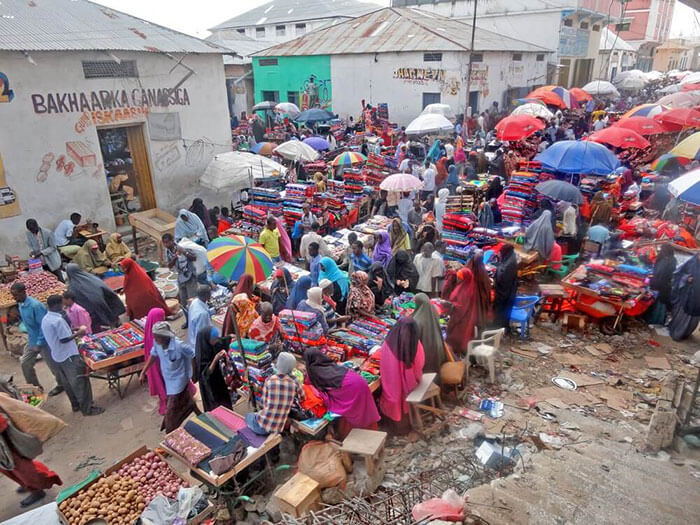
Somalia
Considered the world’s second most fragile nation, this country has endured many struggles in the last few decades with famines, civil war, droughts, locusts, and flooding. Due to the incapacitation of the government due to fighting, Somalia currently operates an entirely informal economy leaving most of the country’s population to survive on subsistence agriculture and livestock production. The other two main sources of income are telecommunications and remittances from the large Somali diaspora that has fled due to humanitarian crises. Additionally due to instability and continued lack of government and law, foreign investment and trade have all but dwindled. Fingers crossed the fighting stops soon, as Somalia has the largest coastline in continental Africa and many prehistoric sites of interest.
Key facts
Capital: Mogadishu
Population: 15.8 million
Government: federal parliamentary representative democratic republic
Official languages: Somali
Secondary languages: English, Italian
Borders: the Indian Ocean to the east, Kenya and Ethiopia to the west
Currency: Somali shilling
Religion: no official record but nearly entirely Muslim
Primary Industries: animal husbandry, agriculture, pastoral nomadism
Agricultural products: sheep, goats, cattle, sugarcane, rice, milk
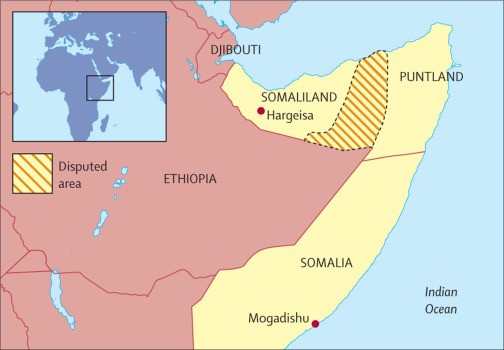
Somaliland
Though most of the international community still recognizes Somaliland as part of greater Somalia, they have declared themselves an independent country and with a significant population of 4.5 million. Being at war with their southern neighbor from the ‘80s to the early 2000s, Somaliland has taken concrete steps towards building up key infrastructure and systems for hope at stability. Against all odds, they have managed to succeed with a democratic government, trade partners, almost universal cell service, and multiple developing industries. They also have managed excellent schools and hospitals to support the nation’s growth. Most prominently, this state has been in the news recently for the construction of a DP World port in Berbera, the closest port to economic giant Ethiopia. This port is estimated to eventually be the leading port in the entire Horn of Africa, something to definitely keep an eye on.
Key facts
Capital: Hargeisa
Population: 4.5 million
Government: federal parliamentary representative democratic republic
Official languages: Somali
Secondary languages: English
Borders: the Gulf of Aden to the north, the Indian Ocean to the east, Ethiopia to the west, and Djibouti to the North
Currency: Somaliland Shilling and USD
Religion: no official record but nearly entirely Muslim
Primary Industries: Remittances from abroad, pastoral nomadism
Agricultural products: fishing, cattle, goats, sheep
Gross Domestic Product (GDP): nearly 2 billion USD (2019)
Sudan
Before the breakaway of South Sudan, greater Sudan was the largest state in Africa, serving as a link between Sub-Saharan Africa and the Middle East. Unfortunately, South Sudan’s independence also meant the remaining country losing most of their oil reserves and oil pipelines. These grand losses were catastrophic for Sudan’s economy, resulting in fighting and high inflation that only continued to worsen the economic situation. Unfortunately, the country is still recovering from these shockwaves. The country also is plagued with terrorism, separatist groups, and armed civilian militias.
Key facts
Capital: Khartoum
Population: 43.8 million
Government: representative democratic consociationalist republic
Official languages: Literary Arabic and English
Secondary languages: there are more than 114 indigenous languages
Borders: north by Egypt, east by the Red Sea, Eritrea, and Ethiopia, the south by South Sudan, the west by the Central African Republic and Chad, and the northwest by Libya
Currency: Sudanese pound
Religion: 90.7% Muslim, 5.4% Christian, 3.9% other
Primary Industries: oil, tannery and leather, weaving mills, and mining
Agricultural products: sheep, goats, insect resins
Gross domestic product: 40.85 billion USD (2018)
GDP per capita: 977.27 USD (2018)
GNI per capita: 4,420 PPP dollars (2018)
GDP growth rate: -2.3% annual change (2018)
Gross national income: 185.1 billion PPP dollars (2018)
Major trading partner countries for exports: United Arab Emirates ($1.1B), India ($705M), China ($670M), Saudi Arabia ($566M), and Indonesia ($242M)
Major trading partner countries for imports: China ($1.88B), United Arab Emirates ($893M), India ($786M), Saudi Arabia ($640M), and Russia ($505M)
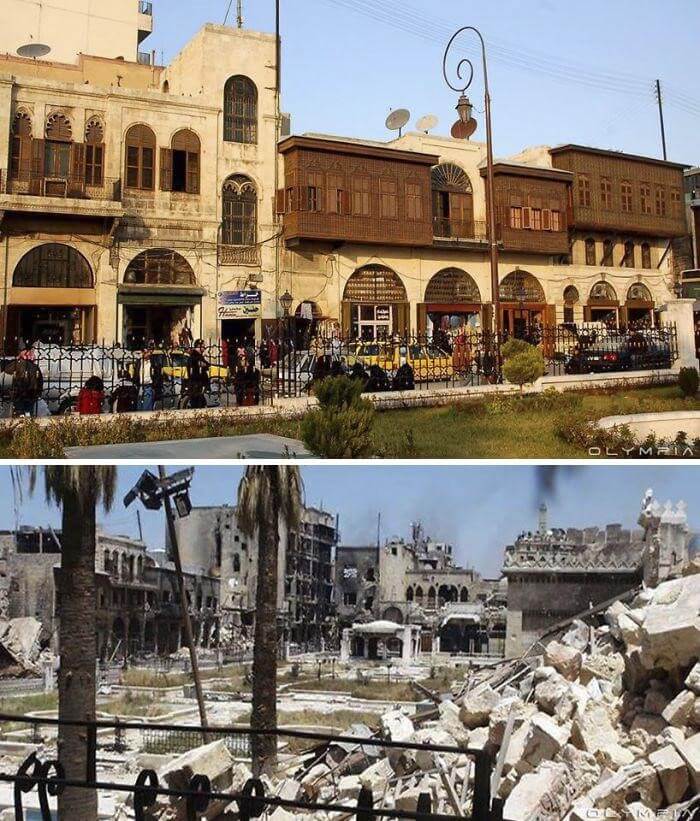
Syria (The Syrian Arab Republic)
Though you would not know it based on the status of the country with the incursion and subsequent rise of ISIS in-country, Syria used to be one of the most desired tourist destinations in the Middle East. In 2010, one year before the civil war started, a massive 8.5 million tourists visited the country, constituting 14% of the economy. In the wake of the civil war, the economy has all but collapsed. The World Bank estimates the GDP lost as a result of the conflict is more than 225 billion USD and it will cost more than 400 billion to rebuild the areas that have been impacted and destroyed. As Syria is currently divided into multiple areas, each with very different allies, it will be fascinating to see how this country’s economy develops post-conflict.
Key facts
Capital: Damascus
Population: 17.5 million
Government: unitary republic
Official languages: Arabic
Secondary languages: Turkish, Kurdish
Borders: Turkey to the north, by Iraq to the east and southeast, by Jordan to the south, and by Lebanon and Israel to the southwest
Currency: Syrian pound, symbols are LS, £S
Religion: 87% Muslim, 10% Christian, 3% Druze
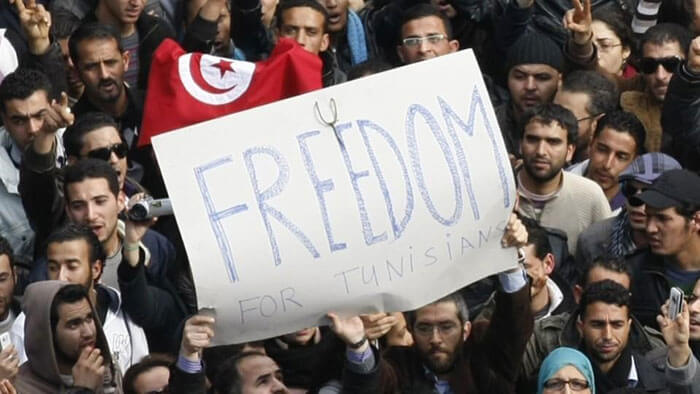
Tunisia
The 2011 Arab Spring revolutions started in Tunisia, protesting the government for change. One of their largest grievances was about the economy not serving the citizens: high rates of unemployment coupled with high costs of goods and services. The desired change has been somewhat fulfilled, but the division between classes has widened even further. As agriculture is the largest industry, innovations and technologies have increased efficiency while providing more food for the domestic population. Out of the countries in the region (besides Cyprus), Tunisia is the one with the most direct channels to Europe as 4 out of 5 of their main partners are EU countries.
Key facts
Capital: Tunis
Population: 11.8 million
Government: semi-presidential republic
Official languages: Arabic
Secondary languages: French, English, Berber
Borders: western is Algeria, south-eastern is Libya
Currency: Tunisian dinar, symbols are DT, د.ت
Religion: no official report but nearly entirely Muslim
Primary Industries: agriculture, textiles, chemicals
Agricultural products: olive oil, dates, citrus fruit
Gross domestic product: 39.87 billion USD (2018)
GDP per capita: 3,447.51 USD (2018)
GNI per capita: 12,070 PPP dollars (2018)
GDP growth rate: 2.5% annual change (2018)
Gross national income: 139.6 billion PPP dollars (2018)
Major trading partner countries for exports: France ($4.62B), Italy ($2.9B), Germany ($2.09B), Spain ($734M), and United States ($616M)
Major trading partner countries for imports: Italy ($4.08B), France ($3.64B), Germany ($1.75B), China ($1.41B), and Spain ($989M)

Turkey
The only country in the region to make the world’s annual top 10 most visited country list, Turkey is a universally appreciated gem. It has seen significant progress in the last two decades with progressive reforms by the government. Right now, it ranks among the top suppliers of agricultural goods, clothing, motor vehicles, construction equipment, electronics, and kitchen equipment. Traditional agriculture still contributes to around 25% of jobs, but this is expected to change as the younger, tech-savvy generation continues to grow. Experts are expecting a boom in innovation and start-ups.
Key facts
Capital: Ankara
Population: 84.3 million
Government: Republican Parliamentary Democracy
Official languages: Turkish
Ethnic languages: Turkish, Kurmanji, Arabic, and Zazaki
Secondary languages: English, German, French
Borders: the north by the Black Sea, the northeast by Georgia and Armenia, the east by Azerbaijan and Iran, the southeast by Iraq and Syria, the southwest and west by the Mediterranean Sea and the Aegean Sea, and the northwest by Greece and Bulgaria
Currency: Turkish Lira, the symbol is ₺
Religion: 99.8% Muslim, .2% Christian
Primary sectors: agriculture, tourism, manufacturing, textiles, technology
Agricultural products: world’s top grower of apricots, figs, raisins, and hazelnuts, also produces cotton, tomatoes, and olives
Gross domestic product: 771.4 billion USD (2018)
GDP per capita: 9,370.18 USD (2018)
GDP growth rate: 2.8% annual change (2018)
GNI per capita: 27,640 PPP dollars (2018)
Major trading partner countries for exports: Germany ($16.6B), United Kingdom ($11.9B), Italy ($10.1B), United States ($8.57B), and Iraq ($8.35B)
Major trading partner countries for imports: Germany ($22.1B), China ($19.2B), Russia ($15.9B), United States ($10.6B), and Italy ($10.4B).
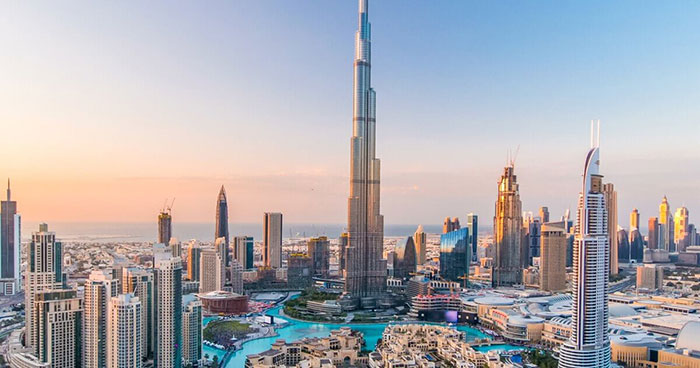
The United Arab Emirates (the UAE)
The UAE is home to the gulf’s most internationally recognized city, Dubai. Everywhere you look in Dubai is a testament to economic development and investment: the world’s biggest shopping mall, tallest building, and longest driverless metro are all here along with 219 other World Records. All things big and glamorous reflect the success of the UAE economy. Knowing their oil reserves were smaller than neighboring countries, the UAE took a bold approach focusing on investing in knowledge, technology, and skilled labor. Every year, the percentage of GDP from services gets higher, while attracting more and more foreign talent. Luxury tourism is also a major force, where Dubai hosts the “the world’s first seven-star hotel”. The country’s stability and investment savvy will ensure it stays an economic powerhouse for many years to come.
Key facts
Capital: Abu Dhabi
Population: 9.89 million
Government: federal presidential elected monarchy
Official languages: Arabic
Secondary languages: English, Pashto, Hindi, Balochi, and Persian
Borders: Saudi Arabia to the west and south and by Oman to the east and northeast.
Currency: United Arab Emirates dirham (AED), the symbol is د.إ
Religion: 76% Muslim, 12.6% Christian, 13% other
Primary Industries: oil and gas, real estate, repair services, construction, tourism, and manufacturing
Agricultural products: tomatoes, eggplant, citrus fruits, mangoes
Gross domestic product: 414.2 billion USD (2018)
GDP per capita: 43,004.95 USD (2018)
GNI per capita: 75,440 PPP dollars (2018)
GDP growth rate: 1.7% annual change (2018)
Gross national income: 726.5 billion PPP dollars (2018)
Major trading partner countries for exports: India ($23.8B), Japan ($21.7B), China ($17.4B), Saudi Arabia ($17.2B), and Oman ($11.7B)
Major trading partner countries for imports: China ($32.1B), India ($27.1B), United States ($17.3B), United Kingdom ($9.69B), and Germany ($9.68B)
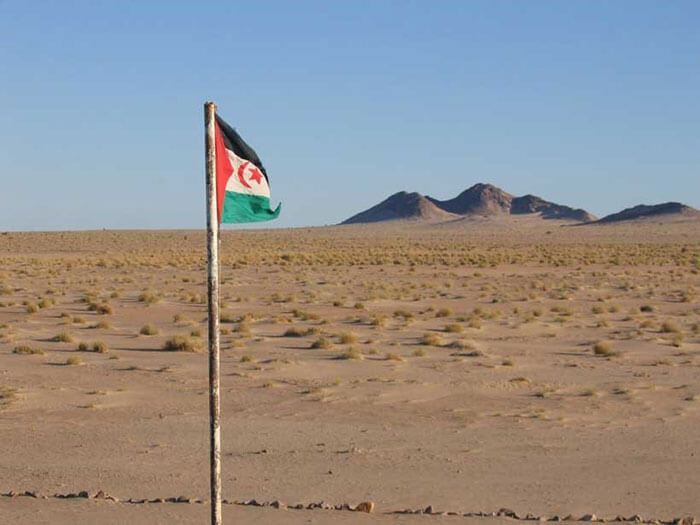
Western Sahara (Sahrawi Arab Democratic Republic)
Though Western Sahara has declared their own independence, Morocco considers them part of their territory. Few economic statistics on Western Sahara have been updated since 2007, so although we don’t have current quantitative data, we certainly have qualitative data.
Western Sahara is a small market-based economy focused on fishing, mining (especially phosphates), and nomadic herding. Currently, the unofficial state has diplomatic ties with more than 40 members of the United Nations. It is also a founding member of the African Union.
Key facts
Capital: Laayoune
Population: Approximately 600,000
Government: approximately 75% falls under Moroccan control
Official languages: Arabic
Secondary languages: Berber, Hassaniya, and Saharan Spanish
Borders: bordered by Morocco, Mauritania, and Algeria
Currency: Sahrawi peseta, symbol Ptas, ₧
Religion: No official record but majority Muslim
Primary Industries: fishing, mining, pastoral nomadism

Yemen
At the Southeastern tip of the Arabian Gulf, just barely separated from the Horn of Africa, lies the country of Yemen. Unfortunately, due to civil unrest in the country, Yemen has been plagued with atrocities in the decade. A 2019 UN report named Yemen as both the world’s most fragile state and the country with the most people in need of humanitarian aid. Terrorism, bombings, disease outbreaks, drought, and hunger are rife throughout the country. However, this was not always the case. The country once had a thriving agricultural system and a service-based economy. Fragments of that glory are still seen, though they are rare. If Yemen manages to get its act together, it could be a major international player in many sectors, but especially tourism and agriculture.
Key facts
Capital: Sana’a
Population: 29.8 million
Government: current civil war
Official languages: Arabic
Borders: west by the Red Sea, north by Saudi Arabia, northeast by Oman
Currency: Yemeni rial (YER)
Primary Industries: food processing and oil
Agricultural products: coffee, cotton, fish, sugar
Gross domestic product: 26.91 billion USD (2018)
GDP per capita: 944.41 USD (2018)
GNI per capita: 3,800 PPP dollars (2014)
GDP growth rate: -2.7% annual change (2018)
Gross national income: 98.13 billion PPP dollars (2014)
Major trading partner countries for exports: China ($635M), Saudi Arabia ($150M), Oman ($142M), United Arab Emirates ($126M), and Malaysia ($92.3M)
Major trading partner countries for imports: China ($1.88B), Saudi Arabia ($935M), United Arab Emirates ($756M), Turkey ($729M), and India ($660M)
We hope you enjoyed this thorough guide to the greater Middle East’s economic statistics. As you can see, in nearly any industry you are in, there are significant opportunities here.
